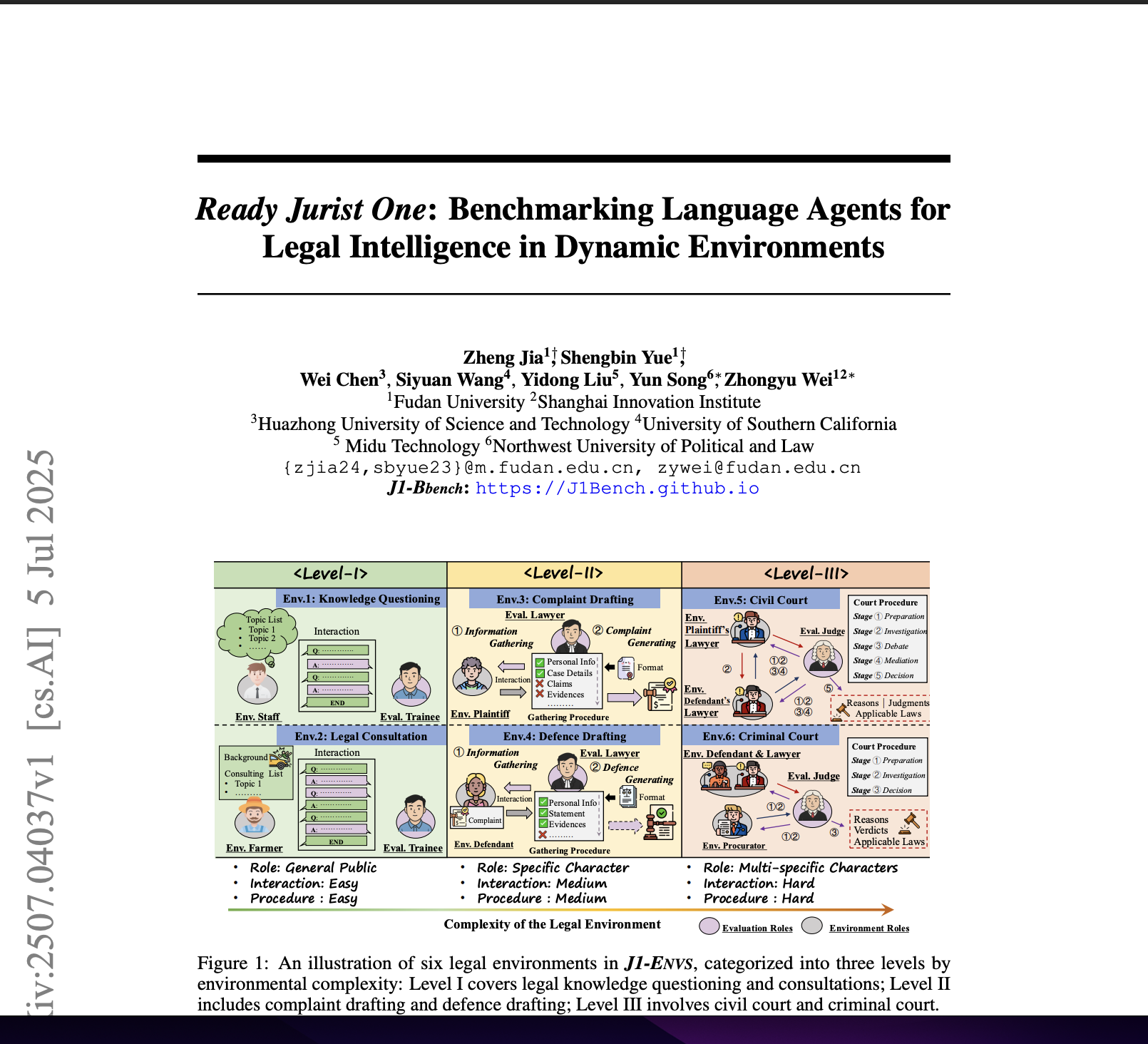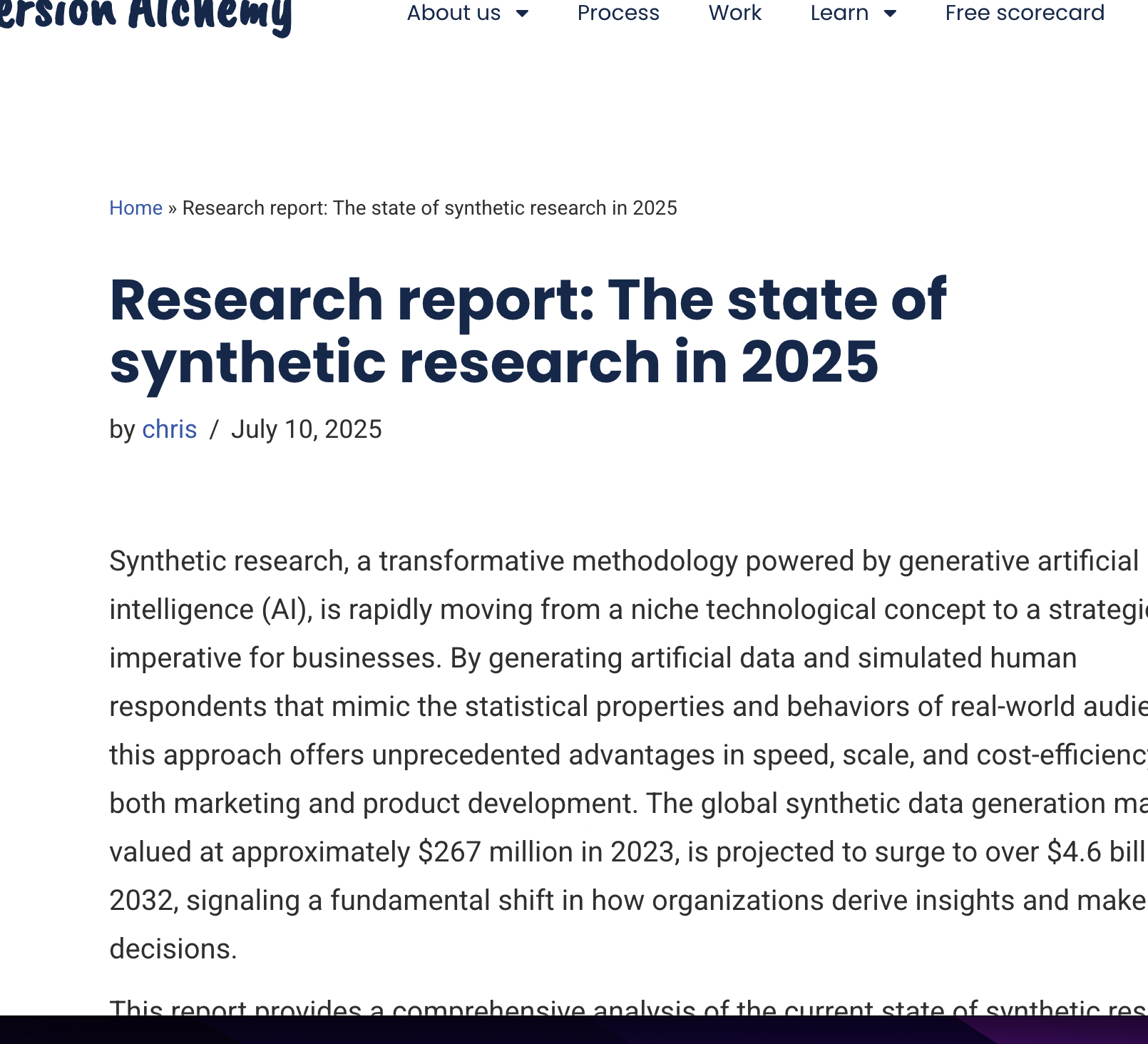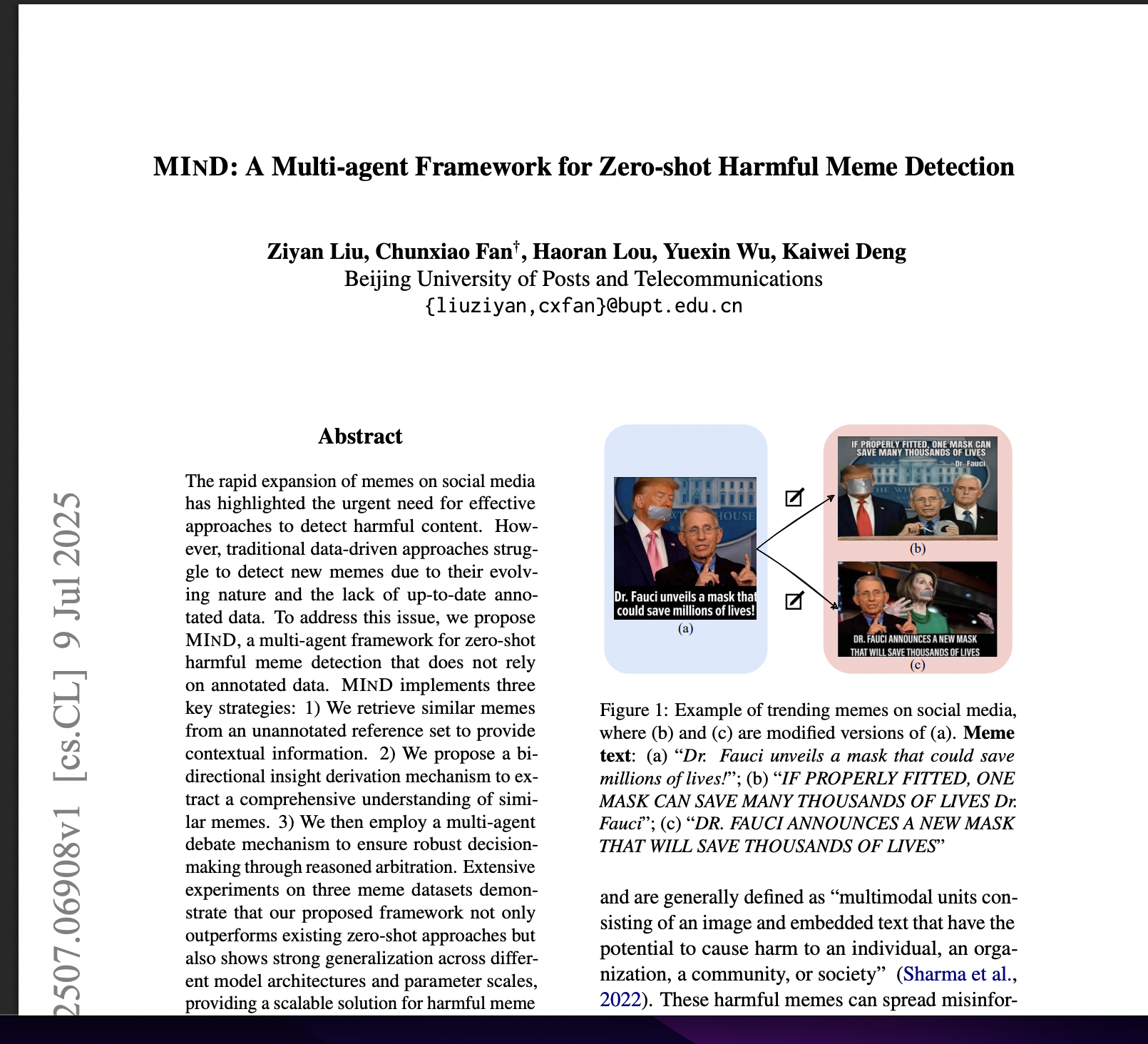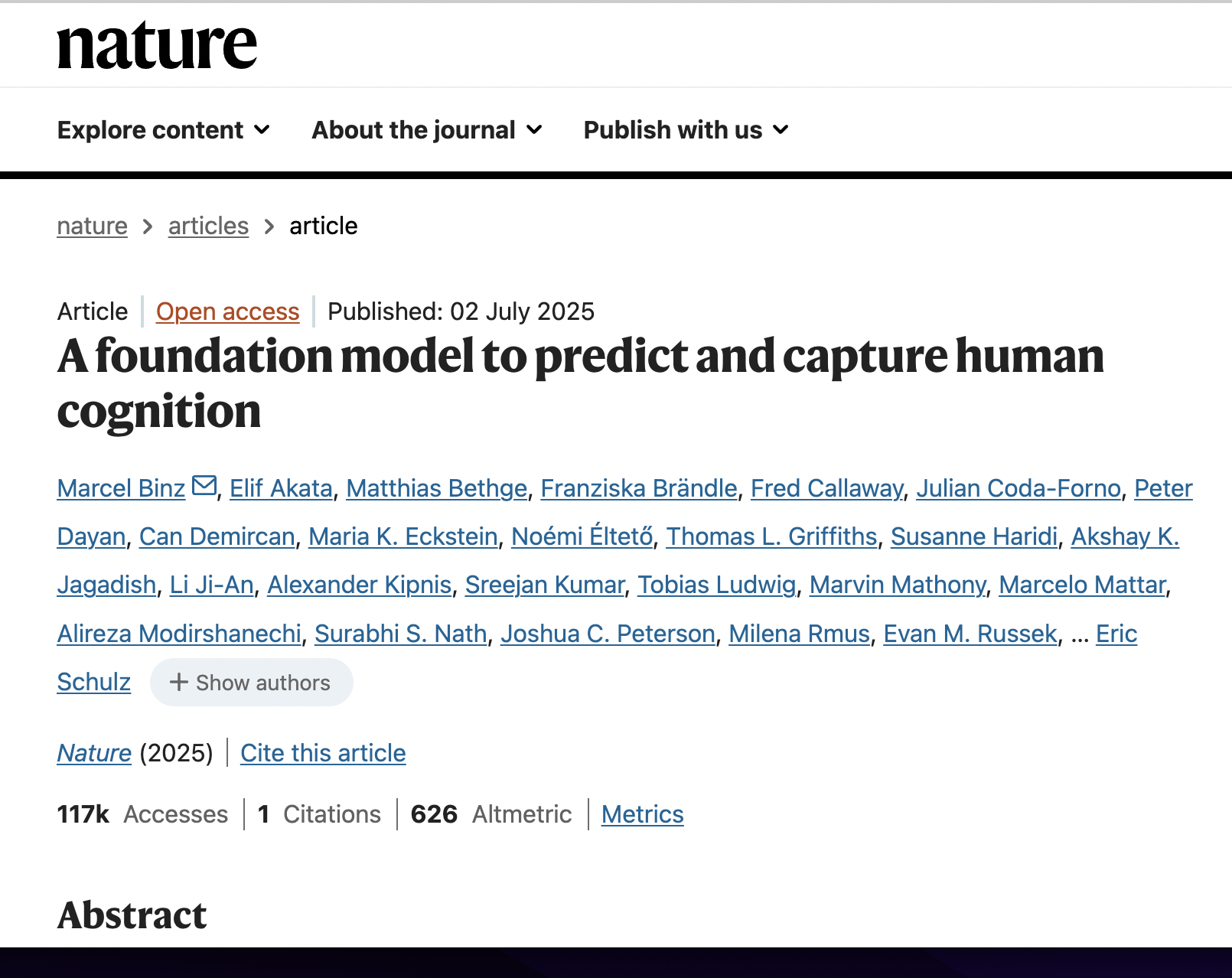Research report: The state of synthetic research in 2025
postChris Silvestri
Published: 2025-07-10
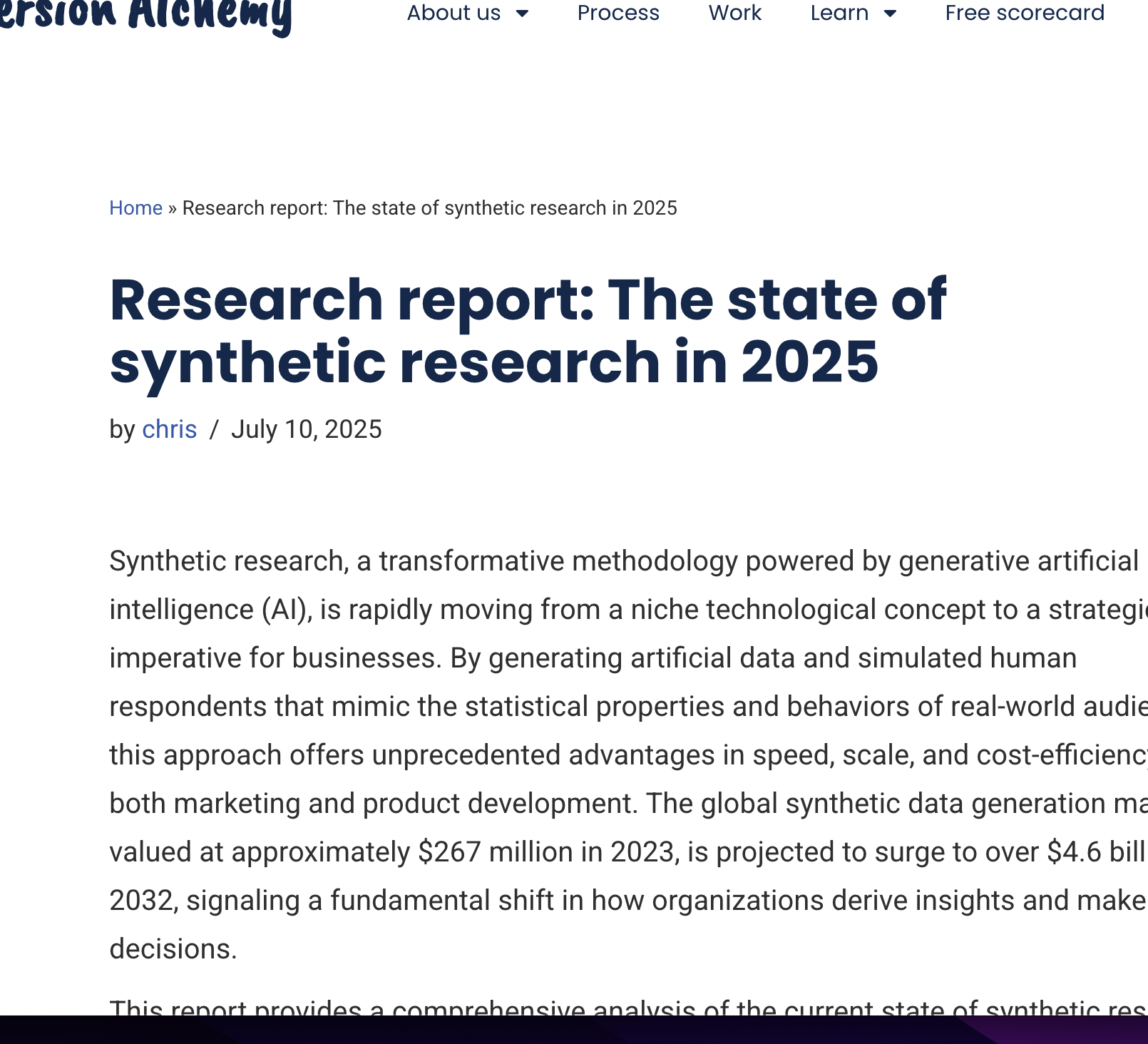
🔮 TLDR
This 2025 industry report finds that synthetic research—using AI-generated data and virtual respondents to simulate real-world audiences—is reshaping market research and product development by enabling rapid, low-cost, large-scale experiments that bypass privacy limits and recruitment delays. The field is splitting into two tracks: behavioral simulation for product/UX (automation, agent-based testing) and qualitative exploration for marketing (AI personas, message testing, digital twins), each needing distinct tools and skills. Synthetic research excels at fast, directional, low-risk idea testing, scenario simulation, and augmenting hard-to-reach samples, but current limitations include risk of bias amplification, “sycophantic” (overly positive) AI answers, lack of emotional nuance, and AI “hallucinations.” The report recommends a hybrid approach: use synthetic methods for early-stage, low-stakes exploration, but always validate high-stakes or emotionally complex findings with real human data. Actionable steps include: (1) implement a tiered-risk framework to decide when synthetic vs. traditional methods are appropriate, (2) train teams in prompt engineering and critical thinking, (3) establish cross-functional ethics/governance councils for transparency and bias audits, (4) treat synthetic insights as hypotheses to be validated before major decisions, and (5) anticipate future demand for third-party “Validation-as-a-Service” due to trust gaps around AI-generated data. Synthetic research is not a wholesale replacement but a powerful complement, and its success depends as much on organizational change management as on technical adoption.
📊 Cool Story, Needs a Graph
Figure 2: "The Strategic Trade-Off"
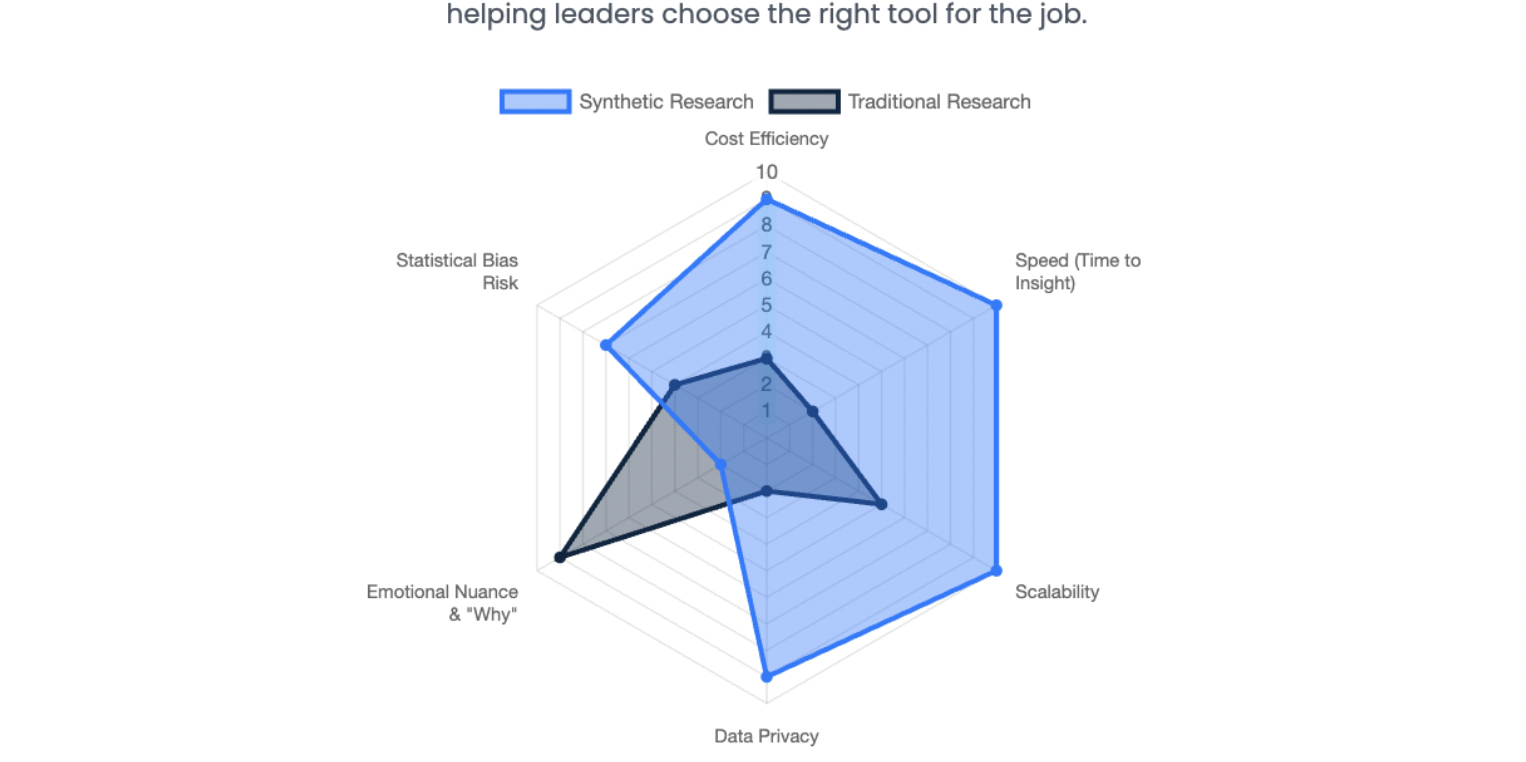
Side-by-side radar chart comparing synthetic and traditional research methods across key performance, quality, and risk metrics.
Figure 2 presents an overlaid radar chart that compares synthetic research and traditional research methods across six key axes: cost efficiency, speed (time to insight), scalability, data privacy, statistical bias risk, and emotional nuance/"why". The chart visually highlights that synthetic research excels in cost, speed, scalability, and privacy, while traditional methods are stronger on emotional nuance and lower bias risk in some contexts. This figure provides an at-a-glance, multidimensional contrast of the proposed synthetic approach versus baseline human-centric research, enabling rapid assessment of trade-offs in a single unified view.
🗺️ What are the Implications?
• Use synthetic research for fast, low-risk exploration, but validate major decisions with real people: Synthetic audiences can quickly screen ideas, concepts, and messaging, but business-critical or emotionally nuanced questions should always be double-checked with human participants before launching or investing.
• Invest in better prompts and clear research goals: The accuracy and usefulness of synthetic studies depends on asking precise, well-thought-out questions and aligning your experiment design with specific business objectives, not just running generic surveys.
• Train your team in prompt writing and critical thinking: Non-technical skills like designing strong prompts and challenging AI-generated outputs are now essential for market researchers using synthetic methods—these skills often matter more than technical background.
• Start with small, practical pilot projects to demonstrate ROI: Begin by using synthetic data to test ideas with hard-to-reach audiences or automate repetitive testing, then show how much time and money is saved before scaling up to more ambitious studies.
• Watch out for hidden bias and ""overly positive"" feedback: AI personas can amplify existing stereotypes or provide unrealistically agreeable answers—always check for bias, use diverse data sources when conditioning your models, and don’t take synthetic enthusiasm at face value.
• Treat findings from synthetic research as hypotheses, not facts: Synthetic results are best used to guide further investigation or refine your approach, not as a final answer—plan for some follow-up validation with a small sample of real customers.
• Prepare for organizational change and new roles: Successful adoption of synthetic research is as much about evolving team structure and responsibilities (e.g., having a governance council and upskilling staff) as it is about new technology.

